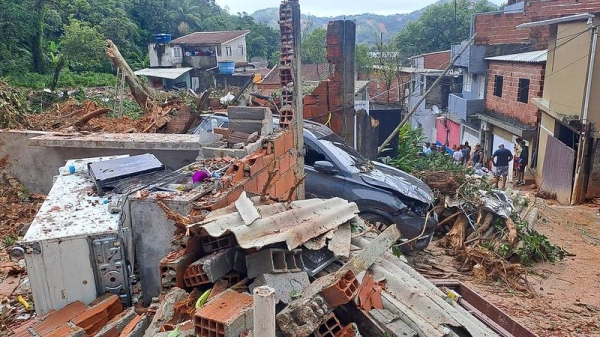
Brazil’s environment minister has declared her country “at war” with fire after a historic surge in blazes – from the depths of the Amazon to the rural south-east – cloaked Brasília and São Paulo with smoke, grounded flights and forced schools to close.
Speaking after an emergency meeting with the president, Luiz Inácio Lula da Silva, on Sunday, Marina Silva called the sudden spike in wildfires in São Paulo state’s countryside “unusual” and said federal police were investigating the causes. Three people have been arrested.
Some fear Brazil could be witnessing a repeat of 2019’s “Day of Fire”: a wave of deliberate, politically charged conflagrations that ripped through the Amazon rainforest in year one of Jair Bolsonaro’s environmentally calamitous presidency.
Referring to the situation in São Paulo, Marina Silva, a veteran environmentalist, told reporters: “In virtually two days, various municipalities are burning at the same time. This isn’t part of our experience curve in all these years we’re been working with fire.
“This is a veritable war against fire and against crime,” added the minister after visiting the headquarters of the environment protection agency Ibama with Lula.
Three of Brazil’s six biomes – the Amazon, the Pantanal wetland and the Cerrado – have been feeling the heat since earlier this year, with the first registering an almost 20-year high of fires in the first half of 2024. Experts and authorities attribute those record levels of destruction to a ferocious drought aggravated by the climate crisis and the natural phenomenon El Niño.
“Brazil is ablaze,” said Cristiane Mazzetti, a forest campaigner for Greenpeace Brasil, who said the country was trapped in “a vicious cycle of burning”. “At the same time that wildfires produce greenhouse gases and exacerbate changes to the climate which cause climate extremes such as extreme prolonged droughts, so too do these severe and prolonged droughts cause the intensification of forest fires.”
But it is the situation in Brazil’s most economically important state, São Paulo, that has grabbed public attention in recent days. As fires tore through rural sugarcane fields and ranches, social media filled with nightmarish footage showing plumes of black smoke bellowing into orange and grey skies.
“The apocalypse has arrived,” tweeted one resident of Campinas, a city about 70 miles from São Paulo, alongside images of the toxic, tangerine-coloured blaze outside her window.
Farther north in Altinópolis, hundreds of ravers were forced to flee an electronic music festival as flames consumed its campsite and stage. “It was terrifying,” one panicked partygoer, Isabella Rocha, told CNN Brasil.
On Monday there were more dire scenes in the capital, Brasília, where the smoke-filled skies resembled those of a Chinese urban “airpocalypse”. More than a dozen flights were cancelled in the nearby city of Goiânia on Sunday because of poor visibility.
Speaking to the TV network GloboNews, Ibama’s director, Rodrigo Agostinho, said this year’s extreme drought had made the Amazon and the Pantanal particularly vulnerable to the flames.
“But … fire doesn’t appear spontaneously,” he continued, noting that none of the recent blazes appeared to have been sparked by lightning strikes. “Most fires in Brazil have been set by someone: sometimes … to destroy the forest, sometimes … out of sadism,” Agostinho added of the annual “burning season”, when farmers traditionally clear land with fire.
He said 3,000 firefighters were battling to control the fires amid fears the problem will intensify between now and October. “[But] what we’ve seen in some regions is that as soon as we’ve put the fire out over here, just over there someone’s setting it again. This must stop.”










